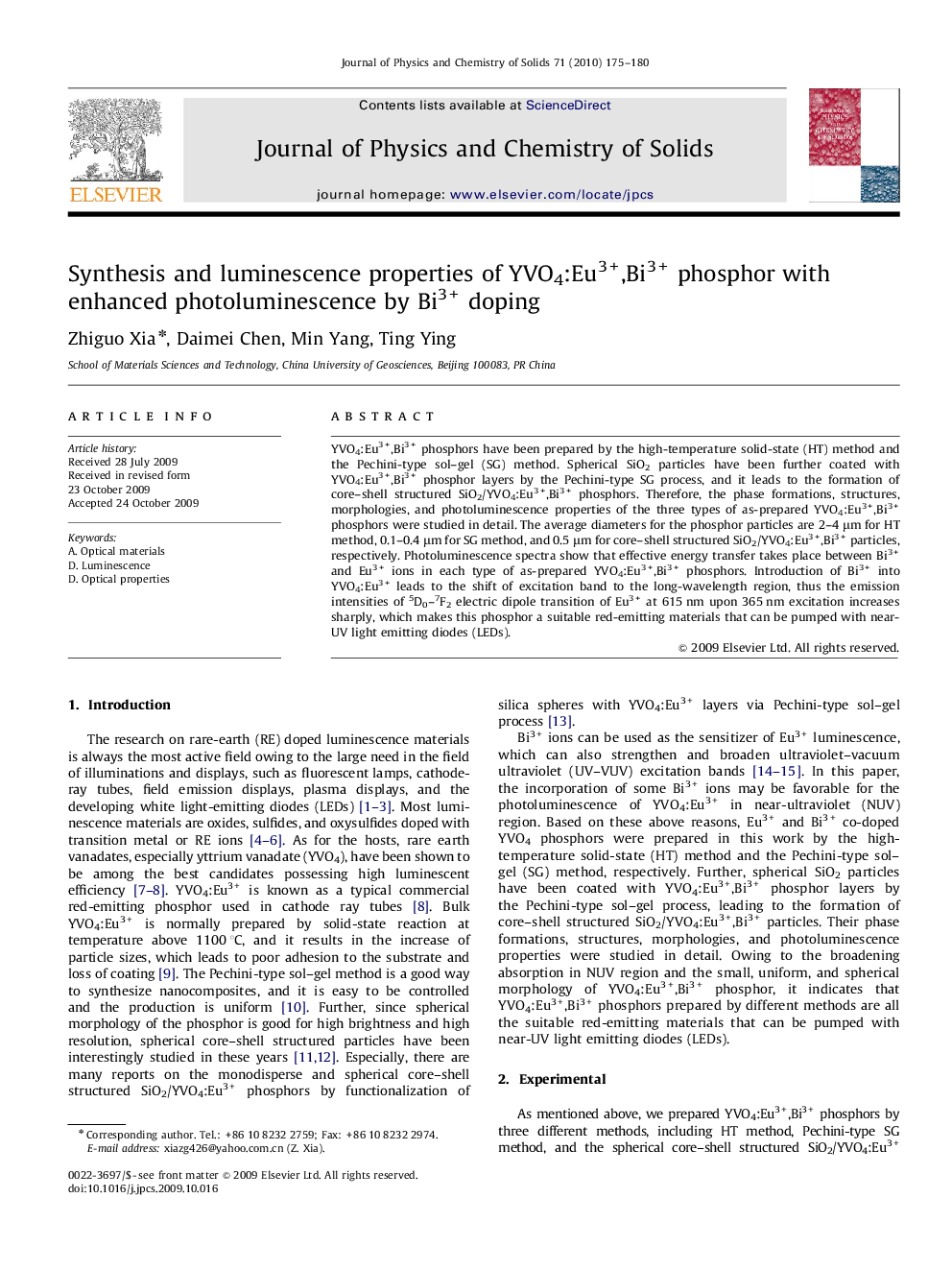| Article ID | Journal | Published Year | Pages | File Type |
|---|---|---|---|---|
| 1517448 | Journal of Physics and Chemistry of Solids | 2010 | 6 Pages |
YVO4:Eu3+,Bi3+ phosphors have been prepared by the high-temperature solid-state (HT) method and the Pechini-type sol–gel (SG) method. Spherical SiO2 particles have been further coated with YVO4:Eu3+,Bi3+ phosphor layers by the Pechini-type SG process, and it leads to the formation of core–shell structured SiO2/YVO4:Eu3+,Bi3+ phosphors. Therefore, the phase formations, structures, morphologies, and photoluminescence properties of the three types of as-prepared YVO4:Eu3+,Bi3+ phosphors were studied in detail. The average diameters for the phosphor particles are 2–4 μm for HT method, 0.1–0.4 μm for SG method, and 0.5 μm for core–shell structured SiO2/YVO4:Eu3+,Bi3+ particles, respectively. Photoluminescence spectra show that effective energy transfer takes place between Bi3+ and Eu3+ ions in each type of as-prepared YVO4:Eu3+,Bi3+ phosphors. Introduction of Bi3+ into YVO4:Eu3+ leads to the shift of excitation band to the long-wavelength region, thus the emission intensities of 5D0–7F2 electric dipole transition of Eu3+ at 615 nm upon 365 nm excitation increases sharply, which makes this phosphor a suitable red-emitting materials that can be pumped with near-UV light emitting diodes (LEDs).
